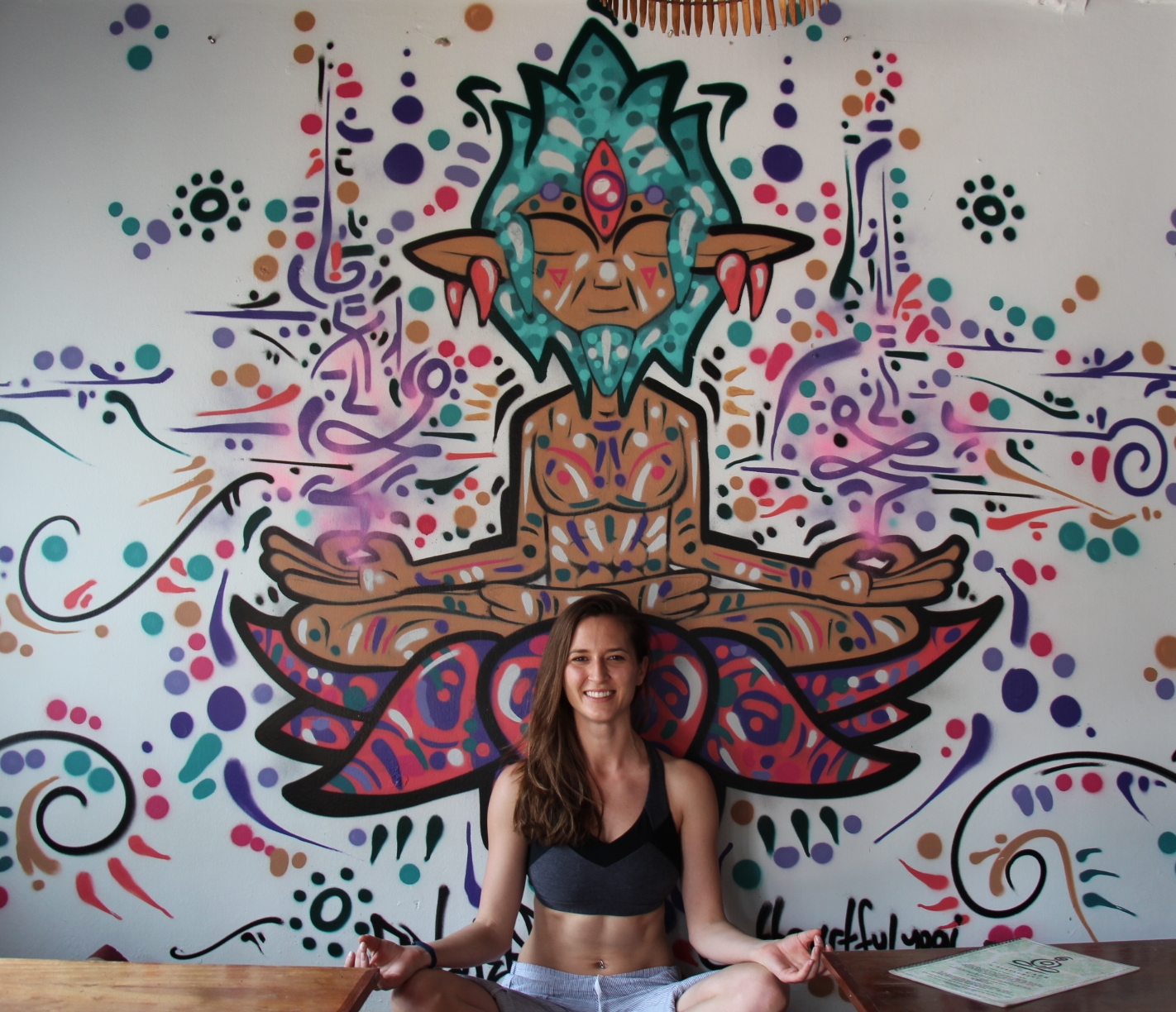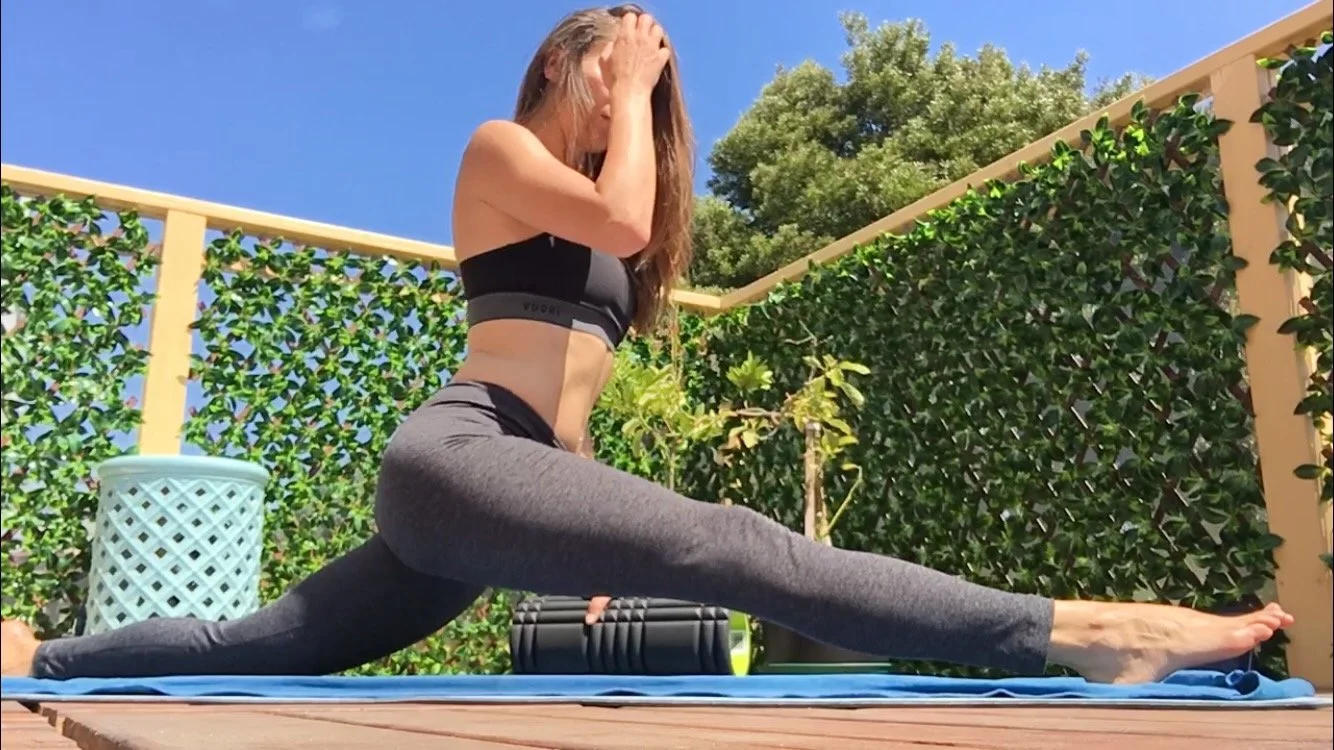The Yoga Pants Revolution
From Ancient Wisdom to Modern Wellness: How Yoga Transformed Women's Lives
The sight of women in yoga pants running errands, grabbing coffee, or picking up kids from school has become so commonplace that we barely notice it. What was once specialized athletic wear has transformed into the default wardrobe choice for millions of women worldwide. But this fashion shift represents something far deeper than mere convenience – it's a visible symbol of how ancient wisdom has quietly revolutionized modern life, particularly for women.
The Remarkable Journey of Yoga to the West
When Swami Vivekananda addressed the World Parliament of Religions in Chicago in 1893, few could have predicted how profoundly his introduction of yoga philosophy would transform Western culture over the next century. What began as a philosophical curiosity for intellectuals evolved through several distinct phases before becoming the ubiquitous practice we know today.
In the early 20th century, pioneering figures like Shri Yogendra and Swami Kuvalayananda began the critical work of scientifically validating yoga's health benefits. This scientific lens made yoga more palatable to Western audiences skeptical of Eastern spirituality. By the 1960s and 70s, yoga had been embraced by the counterculture and women's movement, who found in its holistic approach a reflection of values they were fighting to bring into mainstream society.
The Yoga Pants Revolution: More Than Just Fashion
Today's omnipresent yoga pants represent the culmination of this journey – the complete normalization of what was once considered exotic or alternative. But they symbolize something much more profound: a reclamation of women's bodily autonomy and comfort.
For centuries, women's fashion prioritized appearance over comfort, often actively restricting movement with corsets, crinolines, and impossibly narrow shoes. The adoption of yoga wear as everyday clothing represents a quiet rebellion – choosing garments that honor the body's natural form and facilitate movement rather than restrict it.
When a woman wears yoga pants to the grocery store, she's making a subtle statement: "My comfort and freedom of movement matter. I don't need to be uncomfortable to be presentable or professional." This shift reflects the broader influence of yoga philosophy, which teaches us to honor our bodies rather than subjugate them.
Reconnecting with Ancient Wisdom in Parenting
Perhaps nowhere is the return to ancient wisdom more evident than in modern parenting practices. The Victorian era introduced significant distance between mothers and babies, with rigid feeding schedules replacing intuitive care and strollers keeping babies at arm's length. The stroller – invented in 1733 but popularized in the Victorian era – allowed mothers to transport their children while maintaining the proper distance that fashion and propriety demanded.
Today, we're witnessing a powerful revival of babywearing – carrying infants close to the body using wraps or structured carriers. This practice, common in most traditional societies for thousands of years, is being rediscovered by modern parents who recognize its profound benefits.
The science now confirms what ancient wisdom always knew: babies carried close to their caregivers experience better regulation of their breathing, heart rate, and temperature. They cry less, sleep better, and develop secure attachment. For mothers, babywearing facilitates bonding, makes breastfeeding more accessible, and allows for greater mobility while staying connected to their child.
This shift from stroller to baby carrier perfectly parallels the journey from restrictive fashion to yoga pants – both represent women reclaiming practices that honor their bodies' wisdom and natural functions rather than forcing themselves into uncomfortable cultural constructs.
The Deeper Significance: Embodied Wisdom
The popularity of yoga, comfortable clothing, and babywearing all point to something more profound happening in our culture – a return to embodied wisdom after centuries of mind-body separation.
Western philosophy and religion have long privileged the mind over the body, often viewing physical existence as something to transcend or control. This perspective influenced everything from healthcare to education to parenting. Women, historically associated with the physical realm through childbearing and caregiving, bore the brunt of this body-negative worldview.
Ancient wisdom traditions like yoga offered a radically different perspective. Rather than seeing the body as something to control or transcend, these traditions recognized the body as a source of wisdom and a pathway to spiritual insight. The physical practices of yoga weren't separate from spiritual development – they were integral to it.
As yoga spread throughout Western culture, it brought this embodied wisdom with it. Women, whose bodies had been particularly controlled and restricted by social norms, found in yoga a practice that honored rather than restricted their physicality.
Why This Matters Now
In our digital age, where many of us spend hours each day disembodied in virtual environments, this return to physical wisdom is more important than ever. The stress of modern life, environmental challenges, and technological acceleration all push us toward disconnection from our bodies and natural rhythms.
The widespread adoption of yoga, comfortable clothing, and traditional parenting practices represents a collective intuition that we need to reconnect with ancient wisdom to navigate modern challenges. These aren't merely lifestyle choices – they're adaptive responses to a culture that has become dangerously disconnected from embodied wisdom.
When a woman wears yoga pants while carrying her baby close to her body, she's not just making fashion or parenting choices. She's participating in a quiet revolution – reclaiming ancient wisdom that honors the intelligence of the body and recognizes our fundamental interconnectedness with each other and the natural world.
As we face unprecedented global challenges, this return to embodied wisdom offers hope. Perhaps by reconnecting with ancient knowledge about our bodies, our relationships, and our place in the natural world, we can find more sustainable and humane ways to live in the modern world.
The journey from yoga as an exotic Eastern practice to yoga pants as everyday wear tells a story of cultural transformation – a story of ancient wisdom finding new relevance in addressing modern challenges. It reminds us that progress isn't always about novelty, but sometimes about remembering what we've forgotten.
The Revival of Yoga: Timeline and Influences
How and why interest in yoga revived in the early 1900s and beyond, along with information about how ancient wisdom recognized the benefits of sexual practices.
Late 19th Century - Initial Introduction to the West
1893: The Critical Turning Point
Swami Vivekananda addressed the World Parliament of Religions in Chicago, marking the first major introduction of yoga philosophy to Western audiences
His approach focused on philosophical aspects rather than physical postures, translating yogic texts from Sanskrit into English
His greeting "Sisters and brothers of America" received a standing ovation, beginning America's interest in Eastern spiritual practices
1890s-1900s: Early Adopters and Cultural Exchange
Helena Blavatsky and the Theosophical Society helped introduce Eastern spiritual concepts to Westerners
Many Western women became early supporters of yoga, including Irish Margaret Noble (Sister Nivedita) and British political activist Annie Besant
These early exchanges were primarily focused on yoga philosophy and meditation rather than physical postures
Early 20th Century - Scientific Foundations
1918-1924: Scientific Pioneers in India
Shri Yogendra founded The Yoga Institute in 1918 (the oldest organized yoga center in the world)
He came to the US in 1919, working to "domesticate" hatha yoga by collaborating with doctors to seek scientific evidence for yoga's health benefits
Swami Kuvalayananda founded the Kaivalyadhama Health and Yoga Research Center in 1924
Both pioneers conducted some of the first scientific studies on yoga's physiological effects, measuring impacts on cardiovascular and nervous systems
They published books like Yogendra's "Yoga Asanas Simplified" (1928) and "Yoga Personal Hygiene" (1931) to make yoga more accessible
1920: American Expansion
Paramahansa Yogananda came to Boston to address a conference of religious liberals
He established the Self-Realization Fellowship in Los Angeles to spread Kriya yoga
His "Autobiography of a Yogi" (1946) became a spiritual classic that continues to influence people today
1924: Immigration Restrictions and Impact
US immigration quotas severely limited Indian immigration, hampering the movement of yoga teachers to America
This forced Westerners to travel to India for training, creating a different pattern of cultural exchange
1930s-1950s: Development of Modern Postural Yoga
1930s-1940s: Physical Revolution
Tirumalai Krishnamacharya began teaching in Mysore, India, developing what would become modern postural yoga
He blended traditional hatha yoga with Western physical culture and gymnastics
His students included B.K.S. Iyengar, K. Pattabhi Jois, and Indra Devi, who would later spread his teachings globally
The Sun Salutation sequence was pioneered in the 1920s-30s by the Rajah of Aundh
1947: Academic Interest
Theos Bernard returned from India and published "Hatha Yoga: The Report of a Personal Experience," becoming a key text for yoga in the 1950s
1948: Women's Influence
Indra Devi (born Eugenie Peterson in Latvia) opened a yoga studio in Hollywood after studying with Krishnamacharya
She taught celebrities like Greta Garbo and published "Forever Young, Forever Healthy" in 1953
She helped establish yoga as both acceptable and beneficial for women
1960s-1970s: Countercultural Embrace
1960s: Media Expansion
Richard Hittleman began teaching yoga on television in 1961, pioneering a non-religious form focused on physical benefits
Lilias Folan also used television to bring yoga to American homes
The Beatles' famous association with Maharishi Mahesh Yogi brought Transcendental Meditation into popular culture
Late 1960s-Early 1970s: Countercultural Movement
The hippie movement and New Age spirituality embraced yoga as part of an alternative lifestyle
Yoga became associated with the women's liberation movement as it embodied values that aligned with feminist ideals:
Emphasized intuition and feeling over detached rationality
Focused on cooperation and consensus rather than competition
Valued face-to-face relationships over bureaucratic structures
Professor Richard Albert transformed into Ram Dass after his journey to India, and his book "Be Here Now" became influential
1965: Immigration Reform
Changes to US immigration law removed the 1924 quota on Indian immigration
This allowed a new wave of yoga teachers to enter the US, bringing authentic practices and teachings
1970s-1990s: Institutionalization and Health Focus
1970s: Scientific Research Expands
In 1970, Christopher Hills organized the 'World Conference on Scientific Yoga' in New Delhi
Medical researchers began studying yoga's effects on health, with studies showing benefits for stress reduction, pain management, and mental health
Swami Rama amazed researchers at the Menninger Foundation when tests showed he could control autonomic nervous system functions
1980s-1990s: Mainstream Acceptance
The rise of the fitness industry helped popularize yoga as exercise
VHS tapes and DVDs made yoga accessible for home practice
B.K.S. Iyengar's 1966 book "Light on Yoga" became increasingly influential
Connection to Sacred Sexuality and Ancient Wisdom
The revival of yoga in the West coincided with a renewed interest in ancient wisdom about sexual practices. While modern Western yoga often separated the physical practice from its tantric elements, there is a historical connection:
Traditional tantric practices dating back to the 6th-11th centuries viewed sexuality as a pathway to spiritual enlightenment, rather than something to be suppressed
Unlike ascetic traditions that denied the body, tantric traditions celebrated the physical dimension as a tool for enlightenment
The early 20th century scientific research on yoga helped legitimize ancient practices that had long recognized the mind-body connection
The revival of yoga in the West represented a cultural shift away from mind-body dualism toward a more holistic understanding of human wellbeing—something that ancient wisdom traditions had recognized for millennia. This shift provided context for the later revival of interest in sacred sexuality and tantric practices as well.
The modern resurgence of yoga came through a complex interplay of factors: scientific validation of its health benefits, cultural exchange between East and West, the women's movement, countercultural embracing of alternative spirituality, influential teachers and authors, and media that made practices more accessible. From philosophical beginnings to mainstream fitness practice, yoga's journey to widespread acceptance demonstrates how ancient wisdom can find new relevance in changing cultural contexts.



